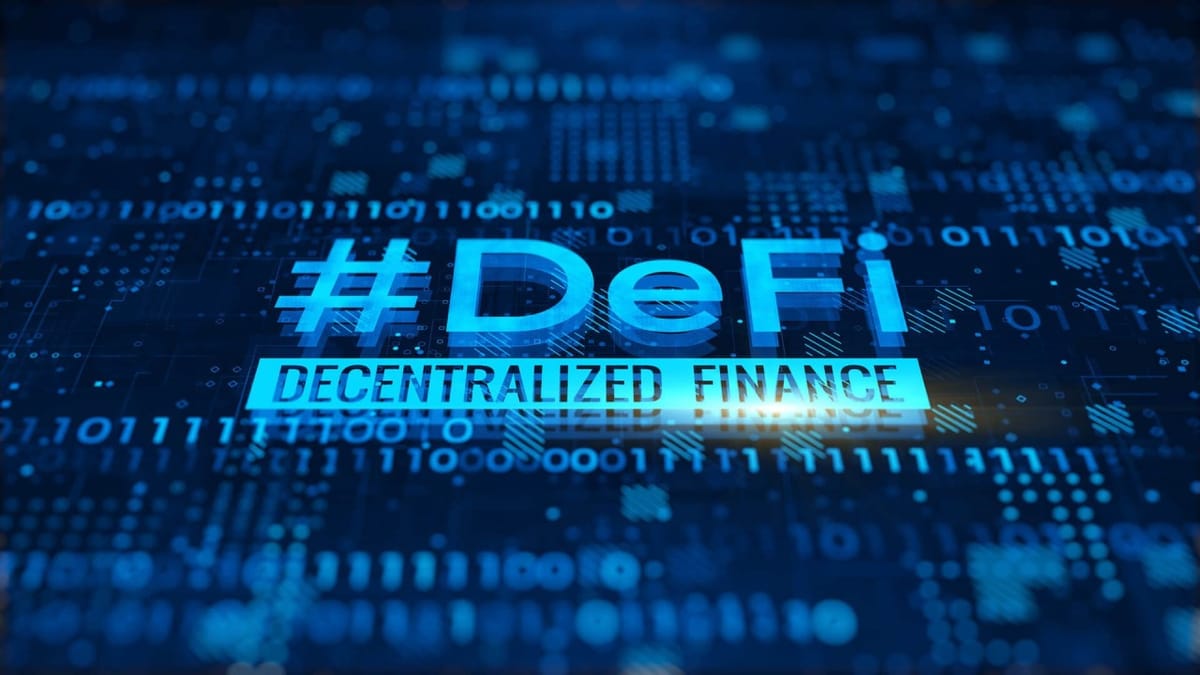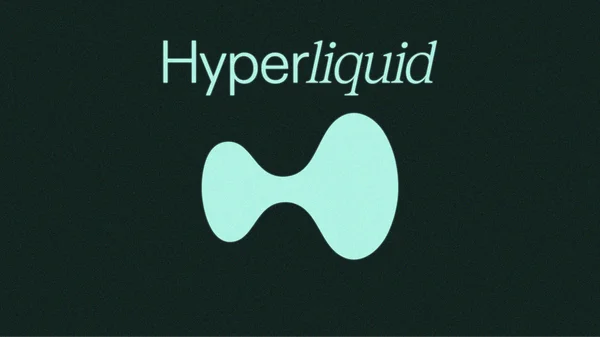(FREE) DeFi in the Age of Collateral Erosion: A New Bretton Woods ?

Recent market actions—volatility in equities, the dollar, and bonds, alongside widening credit spreads and a surge in gold prices—signal a growing erosion of trust in U.S. Treasuries and the broader U.S. financial system as a global "safe" haven. This shift challenges the long-held perception of U.S. collateral as the bedrock of global finance. As we witness this transformation, cryptocurrency and decentralized finance (DeFi) are no longer fringe experiments—they are increasingly viable alternatives. This article explores how these systems are rising in relevance, and the opportunities and risks they present in this new monetary epoch.
The Cracks in the Collateral Foundation
U.S. Treasuries—once considered sacrosanct risk-free assets—are now under scrutiny. Widening credit spreads point to investor unease about systemic fragility and future defaults. The rapid appreciation in gold prices underscores a flight to alternative stores of value. Simultaneously, the U.S. dollar’s strength appears increasingly volatile amid concerns over soaring fiscal deficits, interest expense burdens, and potential geopolitical decoupling.
This is more than a cyclical rotation—it’s a structural recalibration of trust in U.S.-led finance. For a global system built atop dollar-denominated collateral, the implications are profound. As confidence erodes, capital searches for new foundations—more decentralized, transparent, and censorship-resistant.
Crypto: From Speculation to Strategic Hedge
Bitcoin as Monetary Lifeboat
Bitcoin’s hard-coded scarcity, censorship resistance, and global accessibility make it a natural contender for a digital reserve asset. As gold rallies amid collapsing trust in fiat, Bitcoin’s narrative as “digital gold” resurfaces with renewed legitimacy. The SEC’s approval of spot Bitcoin ETFs and the U.S. strategic reserve initiative pushed BTC past $95,000 in early 2025, signaling rising institutional acceptance.
Yet Bitcoin isn’t immune to macro volatility. During global deleveraging events, Bitcoin still behaves as a risk asset. However, its long-term role as a hedge against fiat debasement and systemic fragility remains intact—and increasingly validated.

Ethereum and the DeFi Operating System
Ethereum, the programmable layer of decentralized finance, is often overlooked in systemic hedge conversations. But it’s Ethereum—not Bitcoin—that underpins an entire financial alternative. From lending and derivatives to synthetic assets and tokenized bonds, Ethereum is the smart contract engine reshaping finance. The 2024 gas fee spike (+498%) highlights both its bottlenecks and explosive demand.
DeFi: Building an Alternative Global System
1. Parallel Yield Markets
In a world of suppressed or negative real yields, DeFi offers on-chain alternatives:
- Liquidity mining, staking, and vault strategies routinely offer 5–25% APYs.
- Tokenized versions of real-world yield (like U.S. Treasuries) are growing, but if trust in Treasuries wanes, so does the value of these wrappers—opening the door to on-chain synthetic bonds, dynamic yield curves, and crypto-collateralized fixed income.
- Protocols like Pendle and Element are pioneering DeFi yield strips, enabling sophisticated interest rate products once limited to TradFi.
2. Financial Inclusion and Capital Mobility
The permissionless nature of DeFi offers global financial access:
- Users in emerging markets, especially where dollarized assets dominate, can tap DeFi for cross-border lending, dollar exposure, and asset tokenization—bypassing legacy rails.
- As traditional banking weakens, DeFi wallets become banks, and stablecoins become savings accounts—even if they’re not always dollar-backed.
3. Stablecoin Realignment
If confidence in the dollar slips, what happens to dollar-backed stablecoins?
- USDC and USDT may face redemption pressures.
- Alternatives like DAI (backed by overcollateralized crypto assets), LUSD (fully decentralized and stable), or gold-backed stablecoins like PaxG may gain traction.
- Future models could include algorithmic rebasing stablecoins, or multi-asset reserve baskets akin to the IMF’s SDR.
What Happens to Tokenized Treasuries if Trust in U.S. Debt Declines?
Tokenized Treasuries are a pillar of DeFi’s current RWA (Real World Asset) expansion. But if trust in U.S. debt continues to erode, this sector may face structural headwinds:
1. Loss of Anchor Collateral Status
- Treasuries losing their "risk-free" label undermines tokenized variants used as base-layer DeFi collateral.
- Protocols depending on tokenized Treasuries for lending, yield vaults, or stablecoin backing may face repricing or collateral stress.
- Expect a rotation into crypto-native collateral (e.g., stETH, BTC) or alternative RWAs like gold.
2. Decline in Institutional Demand
- Institutions seeking yield on-chain may hesitate to tokenize increasingly volatile or downgraded debt.
- New capital may shift toward shorter-term crypto staking products or regulated DeFi strategies with diversified backing.
3. Protocolic Stress
- Collateral-linked protocols could suffer TVL drawdowns, depegging of stablecoins, or vault liquidations if Treasury-backed tokens lose value.
- This introduces systemic feedback loops within DeFi.
4. Rotation to Alternatives
- Tokenized gold, commodities, and real estate could become the next-gen collateral rails for DeFi if Treasuries falter.
5. Volatility, Arbitrage & Liquidation Risk
- Market disruptions could cause tokenized Treasuries to deviate from NAV, prompting arbitrage plays or panic selling.
- If used in lending, these deviations may trigger cascading liquidations.
6. Regulatory and Operational Fallout
- Governments may respond with new regulation on sovereign debt tokenization.
- Issuers may be required to post higher reserves, disclose liquidity provisions, or suspend redemptions in volatile markets.
Summary Table
| Scenario | Effect on Tokenized Treasuries | Likely Response |
|---|---|---|
| Declining trust in U.S. debt | Demand falls; loss of "risk-free" status | Rotation to crypto-native or real-world alternatives |
| Treasury yield spike | Token value drops short-term | Price volatility, forced liquidation in DeFi |
| Sovereign downgrade | Increased perceived risk | Need for higher overcollateralization |
| Systemic DeFi integration | Protocol-level instability | Need for resilient reserve assets |
| Regulatory backlash | Operational/legal uncertainty | Pause in RWA tokenization growth |
Where Opportunity Lies: The DeFi Frontier
| Theme | Emerging Opportunities | Example Protocols / Trends |
|---|---|---|
| Store of Value | BTC ETFs, custody services, wrapped BTC on other chains | Grayscale, Bitwise, WBTC |
| On-Chain Yield | Staking derivatives, automated yield strategies | Lido, Yearn, Sommelier |
| RWA Tokenization | Gold, real estate, and commodities as DeFi assets | Ondo, Centrifuge, Paxos |
| Decentralized Stablecoins | Fully crypto-backed or commodity-pegged stable assets | MakerDAO, Liquity, Ethena |
| Institutional DeFi | Permissioned DeFi with KYC layers and compliance tools | Aave Arc, Compound Treasury |
| Cross-Border Payments | DeFi FX markets, remittance corridors | Thorchain, Stellar |
| Layer 2 Scaling | Rollups, ZK tech, MEV protection layers | Arbitrum, Optimism, StarkNet |
The Big Picture: DeFi as Collateral of the Future
As trust in legacy financial systems erodes, capital will search for programmable, composable, and transparent financial primitives. DeFi may become not just an alternative, but the primary venue for capital formation, borrowing, lending, and settlement. Ethereum-based protocols and modular chains like Celestia and Cosmos will power a collateral-repricing machine, where risk, yield, and value adjust in real-time without centralized gatekeepers.
We may be witnessing the dawn of a DeFi-native Bretton Woods, where new forms of money, collateral, and trust are emerging—not from central banks, but from decentralized networks.
Conclusion: Proceed Boldly, But With Eyes Open
The unraveling of U.S. collateral supremacy creates rare inflection points. For crypto and DeFi, it presents both existential opportunity and existential risk. The winners will be those who navigate both—who build antifragile systems, design resilient risk models, and scale access to a world hungry for alternatives.
Bitcoin may become the next sovereign hedge. Ethereum may replace core financial plumbing. Keep an eye on XRP, it's potential for international dominance may be emerging. DeFi could reprice how risk and trust are measured across the global system. But this transition will not be smooth—and it will not be welcomed by the old guard.
In this shifting landscape, conviction, creativity, and caution are the new alpha.
The content provided on CryptoSazz is for informational and educational purposes only and does not constitute financial, investment, trading, or other advice. Nothing on this site is a recommendation or solicitation to buy or sell any financial asset or to adopt any investment strategy.
CryptoSazz may discuss market trends, macroeconomic developments, and quantitative trading models; however, these are intended solely to share insights and analysis and are not tailored to your specific financial situation or investment objectives.
While we strive to ensure the accuracy and timeliness of the information presented, CryptoSazz makes no warranties or representations regarding its completeness or reliability. All opinions expressed are subject to change without notice.
Cryptocurrencies, DeFi protocols, and digital assets involve significant risk, including the potential loss of principal. You should conduct your own research and consult a qualified financial advisor before making any investment decisions.
Past performance is not indicative of future results.


